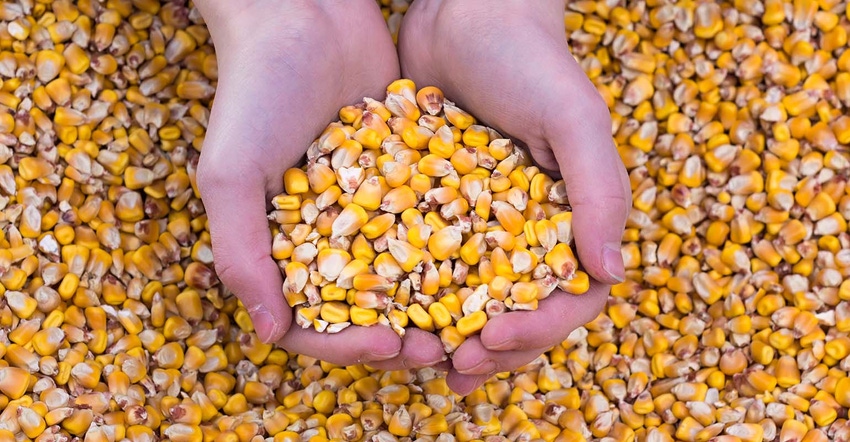
The New Year found the USDA providing several changes to the corn and soybean balance sheets last week. Forecasted carry-out for both corn and soybeans became a little tighter, but there were some interesting underlying fundamental changes.
The markets continue to be underpinned by weather worries in South America – particularly Argentina, which is facing its worst drought in nearly 40 years according to some experts.
Unprecedented corn acreage adjustment
Perhaps the first thing that grabbed the trade’s attention was a 1.6 million cut in harvested corn acreage to 79.2 million. We did a quick check on the historical numbers, and this was the largest area adjustment between the November and January production reports since at least the 1988 crop year.
This was a rather large 1.3 million below the low end of the trade range of 80.5-81.1 million. A partial offset was a 1.0 bpa upward yield adjustment to 173.3 bpa.
The net of these two revisions lowered production by nearly 190 million. Combining this with carry-in puts domestic supplies (excludes imports) down more than 1.2 billion bushels versus 21-22.
Demand outlook lowered despite Argentine production issues
On the demand side, USDA reduced its feed/residual estimate by 25 million bushels from last month to 5.275 billion. This is now a not-so-small 443 mbu below the 21-22 level as a half million fewer grain consuming animal units, the smaller crop, and higher expected corn prices (22-23 forecast at $6.70 per bushel versus $6.00 last year) are impacting feed/residual use.
The USDA trimmed 10 mbu from its December FSI (Food, Seed and Industrial Use) while many analysts would argue further reductions in particularly ethanol grind will be forthcoming in the future based on poor margins and sluggish use during the first quarter.
The export outlook received some attention this month with USDA cutting that estimate by 150 million bushels, down to 1.925 bbu. The latter figure is nearly 22% less than the final total for the 21-22 crop year.
There has been much market focus on Argentine weather so far this year and USDA did not disappoint, reducing its production estimate there by 2.5 MMT (about 100 mbu) and taking exports down 3 million to 38.0. That’s 2.5 million tonnes MORE than last year’s figure (at 52.0, the crop is still 2.5 million larger).
So smaller crop, smaller competitor exports and why not a larger U.S. forecast? That’s basically due to the fact Ukraine has recorded better than expected exports during the September-December time frame. Plus, it started off with 4 MMT MORE in carry-over stocks than normal and domestic use there was cut back 1.5 MMT due to the conflict. Thus, this month’s Ukraine export forecast was increased by 3 million to 20.5.
Combine all that with the fact the U.S. exports are still being impacted by a 29 MMT/1.14 bbu /33% larger 21-22 Brazil corn crop and a still larger output for this year. The Brazil crop was lowered 1 million bushels last week to 125.0. The export forecast remains at 47.0 for 22-23 but the market is taking note of a very aggressive program so far in 22-23 which has impacted first quarter U.S. shipments.
Corn prices to ease into spring?
My bias is that corn prices will stay strong. Given the Argentine weather situation, there is just too much uncertainty in the market.
.png?width=700&auto=webp&quality=80&disable=upscale)
Due to China’s large stocks situation, inclusion of its actual/expected inventories into any stocks-to-use analysis distorts the picture. When China removed, one can see the world corn situation is “rather tight”, and with not much more cushion than what was available back in 2012-13.
An Argentine (and Brazil) weather premium? Perhaps.
.png?width=700&auto=webp&quality=80&disable=upscale)
The graph above illustrates how year to year changes in Argentina’s corn supply (production plus carry-over stocks) impacts its export. The “Fit” is pretty respectable as one might expect as Argentina essentially exports 70-75% of what it produces.
The graph gives several alternatives to this year’s estimates with the impact on exports shown in the box in the upper left-hand corner of the graph. USDA’s latest production/export forecast calls for a near-100 mbu increase in the country’s exports. However, if crop size should fall to say, 47.5 or 45.0 or 40.0 MMT, corn exports would decline 54, 130 and 283 mbu versus the 2021-22 level.
USDA may have been a little premature cutting U.S. exports given conditions in Argentina. Stay tuned and expect continued volatility into the U.S. growing season, protecting both your old and new crop cash position with the appropriate options strategy.
Contact Advance Trading at (800) 664-2321 or go to www.advance-trading.com.
Information provided may include opinions of the author and is subject to the following disclosures:
The risk of trading futures and options can be substantial. All information, publications, and material used and distributed by Advance Trading Inc. shall be construed as a solicitation. ATI does not maintain an independent research department as defined in CFTC Regulation 1.71. Information obtained from third-party sources is believed to be reliable, but its accuracy is not guaranteed by Advance Trading Inc. Past performance is not necessarily indicative of future results.
The opinions of the author are not necessarily those of Farm Futures or Farm Progress.
About the Author(s)
You May Also Like






